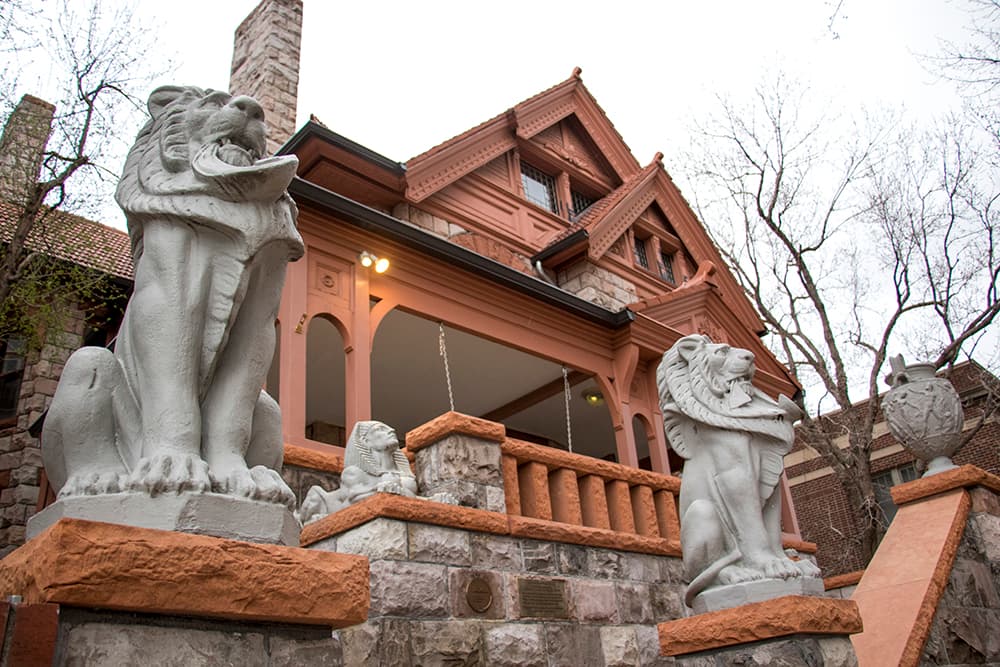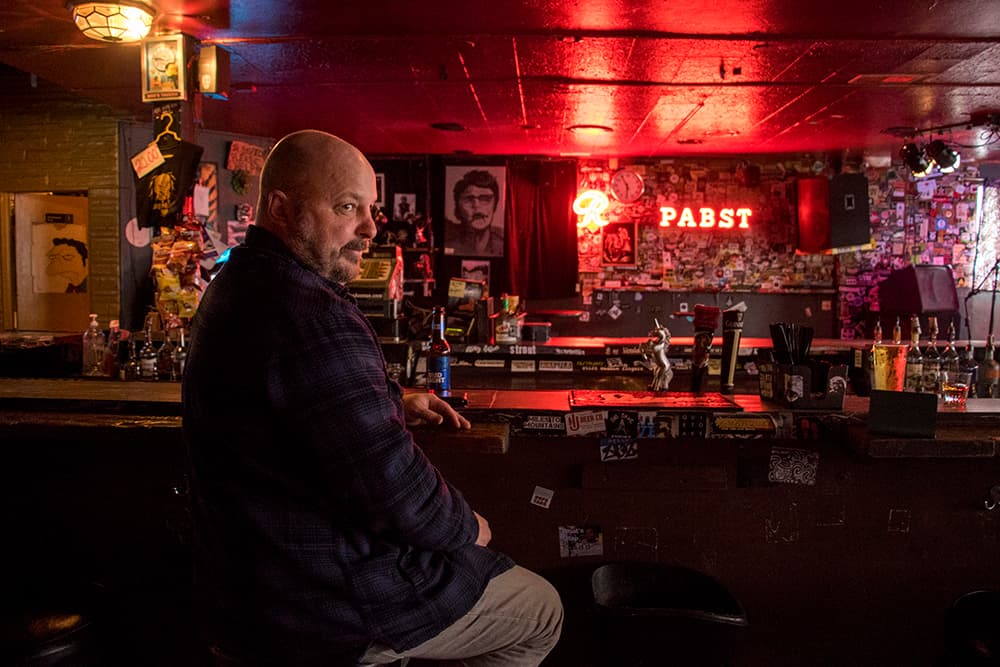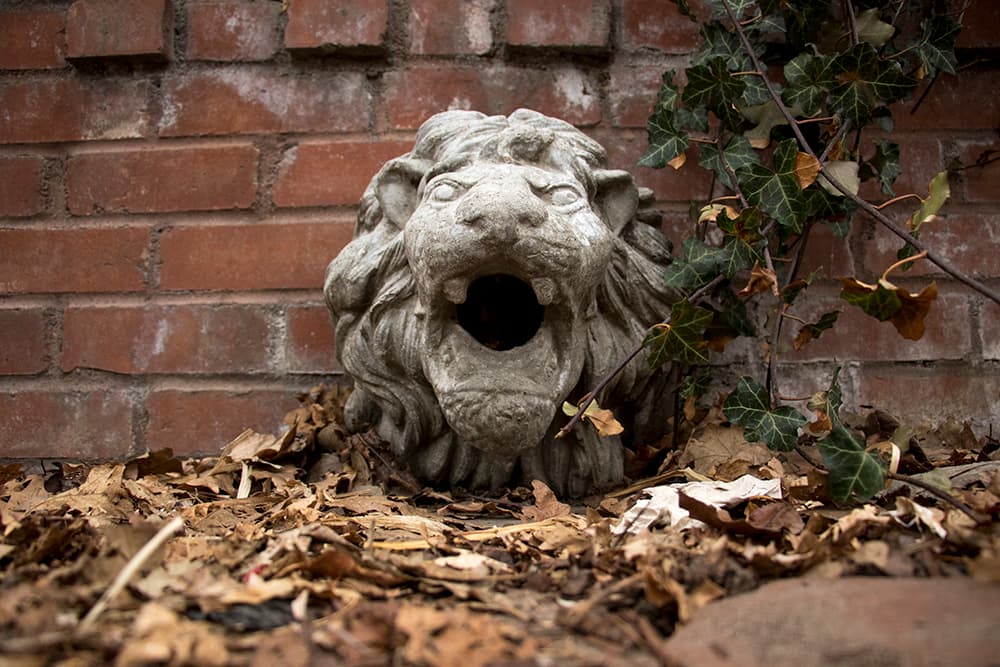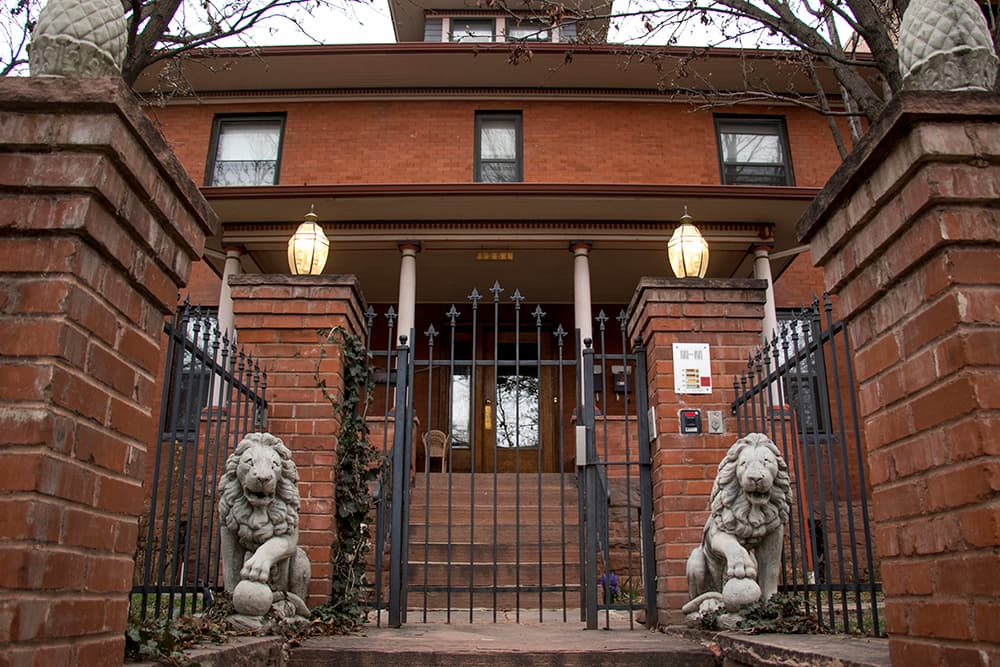
It's Readers' Choice time once again, that moment where we go all out to find answers to your local questions.
Today's query comes from Caleb Pilon, who was wondering about the lion sculptures he's come across as he's gotten to know East Colfax.
"We have noticed a lot of stone lions featured in the architecture in the area," he wrote. "We were wondering if the lion motif was connected in any way to the Lion's Lair bar on Colfax. Is this just a design fad from the era the houses were built, or is there a deeper connection?"

It's true, there are a ton of lions out there.
Let's just start by validating the premise. These things are everywhere. Just walk a few blocks off Colfax and you'll see maned lion sculptures perched in front of homes, many of which are Victorian-style mansions.
I went walking around and was astounded with the sheer density. On Pennsylvania Street, I found three properties in a row with these little stone sentinels. That street is also home to some of the city's most detailed lions: those adorning the Molly Brown House. Annie Levinsky, executive director of Historic Denver Inc., told Denverite that Molly Brown's lions were imported in the 1910s or '20s.
On Pearl Street at 10th Avenue you'll find what is perhaps Denver's most-lioned home. The mansion sports no less than seven in its front yard.

The Lion's Lair is unrelated to all these stone lions.
The Lion's Lair, which is on Colfax at Vine Street, is actually named for John Lyons. Tony Meggitt, current co-owner of the bar and concert venue, told Denverite that Lyons took the space over in the late '60s. Back then, he said, it was called the Aladdin Lounge, between the Aladdin Theatre (where Walgreens is today) and Aladdin Liquors (which still stands today). Before it was the Aladdin, it was the Playboy Lounge (the name was bought by Hugh Hefner's Playboy enterprise when they built their own club in Denver in the '50s).
"It was his retirement bar," Meggitt said, the end to a long career running Denver watering holes. Lyons died in the mid-'90s.

So, why lions?
I tried to figure out why lion statues were generally popular and why they might have been embraced by Denver. I contacted every local historic and artistic institution I could think of, but nobody was able to give me a definitive answer as to why people like these things.
Most people said they had a feeling that lions exude security. But, for something so common, nobody could say for sure. So, I contacted the Smithsonian Institute. They were kind enough to indulge me.
Sharon Park, associate director of architectural history and historic preservation for Smithsonian, said via email that lions are indeed symbols of strength and security, "ever since the Egyptians and through all the classical periods (Greek, Roman, Etruscan, Assyrians, etc.)..."
She continued: "They are a classical feature at gateways, monumental stairs, state houses, museums, bridges and in any number of landscape and park settings. They also found their way as faces on Victorian grillwork, plaster panels, bas reliefs and other art forms, particularly as outdoor features on entry gate posts and as statues in formal gardens, even coat of arms."

This relationship between lions and Victorian style is how they found their way to Denver.
Many of the mansions around Capitol Hill were designed in a Victorian style. They were built at a time when Denverites were trying to use European architectural flourishes to show the world that they were sophisticated, not just a dusty cow town.
We see this in Civic Center Park's grand columns, which were in vogue after the 1893 World's Fair in Chicago, European-inspired decor inside the Brown Palace, gargoyles carved into South High School and English-style stained glass shimmering in the city's well-to-do residential neighborhoods.
So the lions, as a staple of that Victorian style embraced by Denver in the early 20th century, are right at home alongside all these other details of the time.

I wondered if the prevalence of these defensive statues could tell us anything about relationships between neighbors or classes at the time. What, exactly, were they guarding against?
Park said it's hard to guess intent when looking back in time like this but, she wrote, "fences they say were always good for neighbors."
Correction: Tony Meggitt's name was originally misspelled with an "e" instead of an "i."











